By Tom McHale
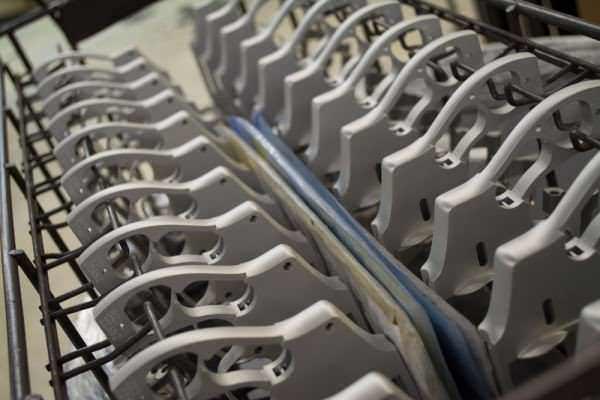

USA –-(Ammoland.com)- You think Shannon Watts, founder of Moms Demand Alimony From Tyrannical Little Ex-Mayors With Serious Napoleon Complexes (MDAFTLEMWSNC) has serious armed security?
If so, you should check out Smith & Wesson’s Springfield, MA manufacturing plant.
We’re talking motorized vehicle barriers, iron gates, metal detectors, and security guards armed with – you guessed it – Smith & Wesson M&P pistols. Of course, one of the many differences between Smith & Wesson and Shannon Watts is that the Smith factory actually warrants tight security.
That and the Smith & Wesson folks make a productive contribution to society.
I had the distinct pleasure of touring the Smith & Wesson factory this month to see exactly how their guns are made. Wow. I’m still stunned by the complexity, equipment, people, scale and history. The current facility was built in 1945 using a war-footing design. It’s engineered to keep operating during a direct aerial booming attack. The idea was that the catacombs, built under dirt, steel, and loads of concrete, would house operating machinery and workers even while the above ground part was flattened. That’s pretty hard core.
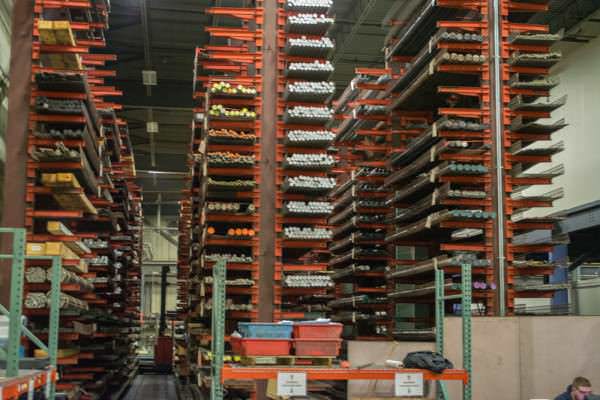
It all starts with steel. Lots and lots of it of various types and grades. Like other modern manufacturers, Smith & Wesson streamlines efficiency using LEAN manufacturing techniques, so raw materials are delivered continuously. What you see in the photo here is only about a seven-day supply.
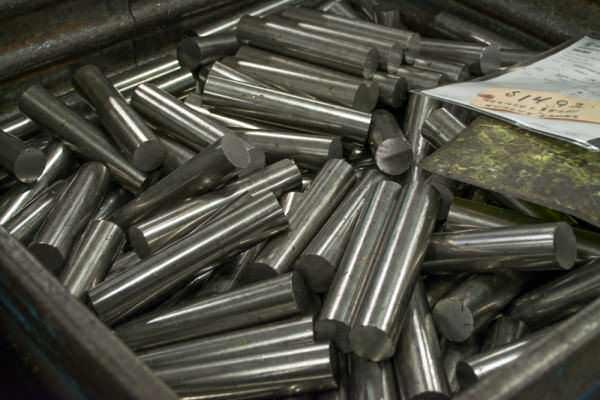
When steel arrives as bar stock, it faces two different fates, and I’m not sure which is more violent. First, it can head to the forge, where giant, two-story transformers machines pound them into gun frames and various other components. Second, the raw stock might head straight for computerized milling, where it will be transformed into things like barrels, slides, revolver cylinders and other miscellaneous parts.
We’ll start with the forging process as forged parts also head to the milling machines after they’re stamped out.

A forge is a giant, and really scary, piece of equipment. The big ones are about two stories tall and smash weights heavier than Rosie O’Donnell over and over again onto red hot steel, thereby causing it to take the desired shape.
You’ll know when the forges are running at Smith & Wesson as the entire eastern seaboard shakes.
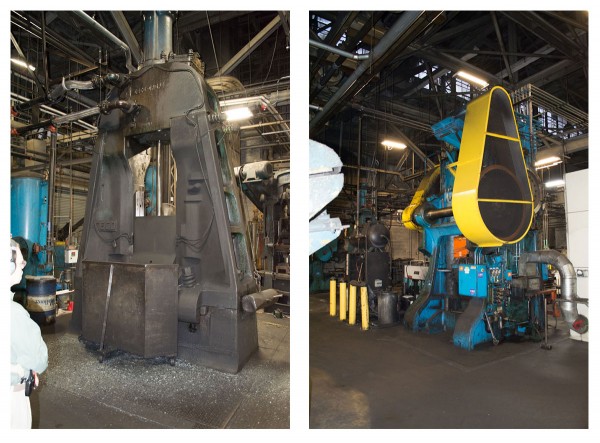
The forging process does not produce completed parts. It gets you close as you can see by the bar stock to 1911 frame forging steps.
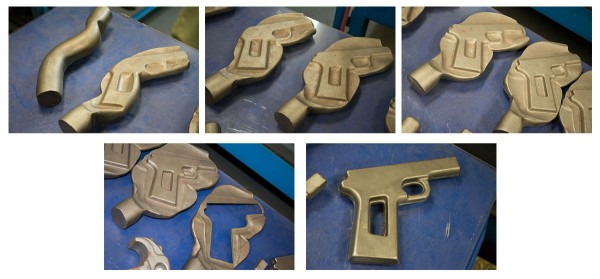
As you can see from the sequence above, forged parts require further work, which leads us to the second potential fate of all that incoming steel – milling.
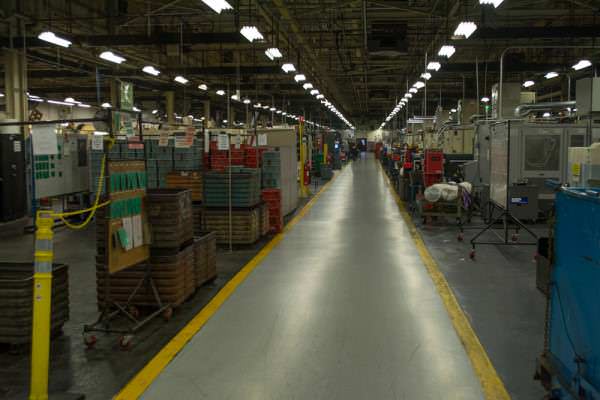
Smith & Wesson continues to make massive investments in CNC machines to perform this kind of work. New machines are brought in and fired up on a regular basis. With each new generation of milling machine technology, great strides in efficiency become possible. For example, the process of milling revolver cylinders used to require 60+ milling steps. Now, two machines complete the whole process.
The newest CNC machines offer up to seven axes of operation. In plain english, that means the machine can vigorously attack the metal from lots of different directions without removing and reorienting the raw material. This means that more of a part can be made in a single machine setup step.
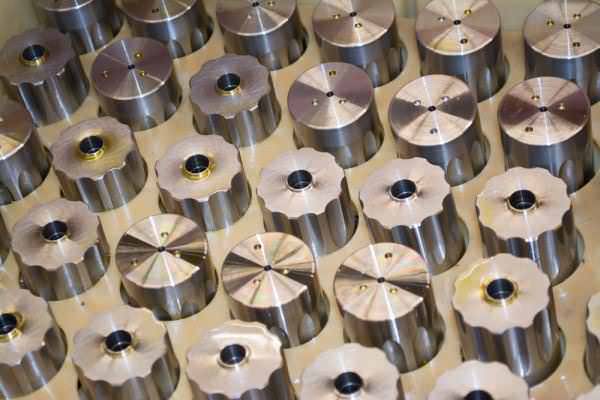
All the milling that goes on requires thousands of tool heads – those scary looking cutters and blades that cut, grind and shape steel and aluminum pieces and parts.

No, contrary to what MSNBC tells you, the tools above are not used for enhanced interrogation techniques at Club Gitmo. They’re machining tool heads. Over the years, Smith & Wesson has figured out that they’re better off making their own tool heads from scratch. They have an entire section of the factory dedicated to machining and sharpening tool heads like those above.
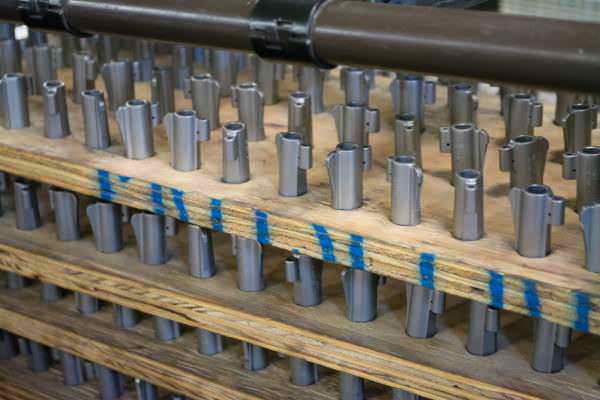
After parts are forged, milled and otherwise abused into the proper shape, many are destined for yet another insult – heat treating.
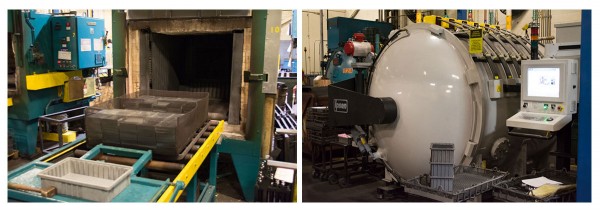
You’ll see different ways to do this depending on the specific requirements. Some machines resemble giant Burger King flame broilers, where parts are conveyed through a flaming chamber. Others go into huge and very well-insulated ovens. Some even head for giant vacuum chambers that provide heat treatment all the way through the components – not just the surface layers.
Most components get some type of finishing treatment like bluing or anodizing. While most finishing facility’s looks like an EPA nightmare, this one is not. A few years back, Smith & Wesson invested in a hazardous materials treatment plant right here next to the finishing area. Nasty chemicals go in one end, through a myriad of pipes, filters, valves and such, and come out the other end as drinkable water. I didn’t try it though…
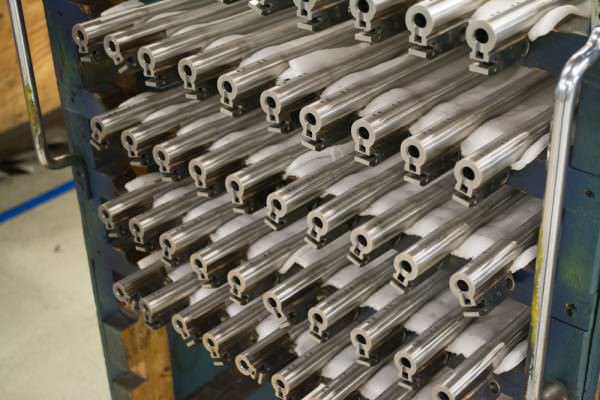
Once all the parts are made, finished, polished and checked, it’s time for assembly. This is the step where the human element comes in to play. Small groups of technicians work together to assemble completed guns, with each checking the work of the person before them in the line. These small teams of three to six people ensure mutual accountability and a high level of quality control.
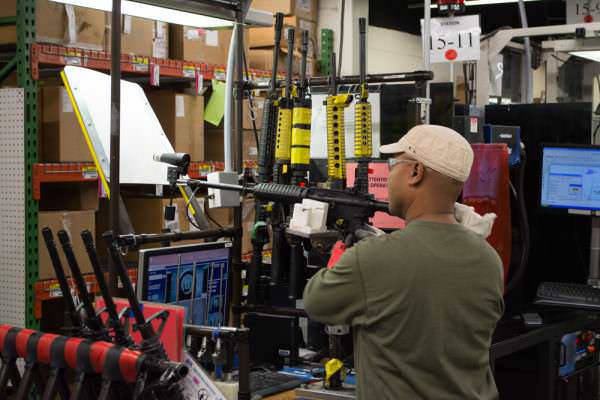
There’s one last step before shiny new guns are put into boxes and shipped. Smith & Wesson has at least three (I lost count) indoor ranges where employees test fire every gun to make sure it works properly.
As an avid reloader, I begged and begged to take home just one of the dozens of 55 gallon drums full of shiny once-fired brass, but alas, the airlines wouldn’t let me carry it on the plane.
After touring dozens of factories like this one, I always have to chuckle when I see an internet rant about who makes good guns and gear and who doesn’t. You tend to gain a whole new appreciation for what gun and accessory manufacturers do when you walk the halls, understand the processes and meet the people that make our guns.
Next time you think about buying a Smith & Wesson, take a look at these photos – it might give you a whole new appreciation for what you’re getting when you unwrap that shining new S&W firearm..
About
Tom McHale is the author of the Insanely Practical Guides book series that guides new and experienced shooters alike in a fun, approachable, and practical way. His books are available in print and eBook format on Amazon . You can also find him on Google+, Facebook, Twitter and Pinterest.
